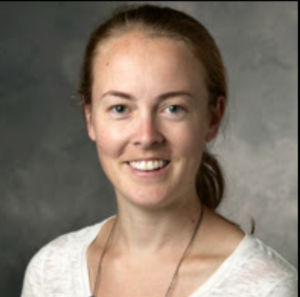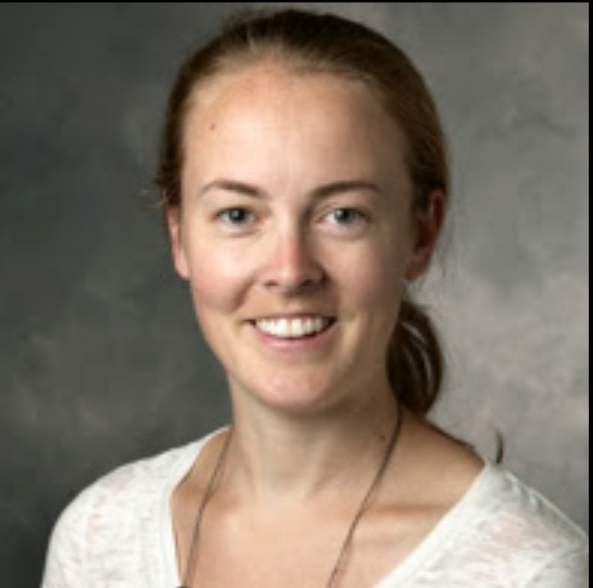In this edition of Glam Grads, The Daily reached out to environmental earth system science Ph.D. candidate Dana Chadwick about her research interests in landscape biogeochemistry and ecosystem ecology. Chadwick earned her undergraduate degrees in environmental economics and policy as well as molecular and cell biology before arriving at Stanford for her Ph.D. Chadwick’s current research, conducted under Gregory Asner, principal investigator in the Department of Global Ecology at the Carnegie Institution for Science, involves the role of hillslope processes in controlling nutrient distributions within lowland Amazonian ecosystems.
The Stanford Daily (TSD): Can you tell me a bit about yourself and how you arrived at Stanford?

Dana Chadwick (KDC): I did my undergrad at Berkeley in environmental economics and genetics. I’ve always been interested in science, including both the social sciences and natural sciences, and I really valued being able to study both during my undergraduate experience.
After my undergrad, I worked at a company that was involved in environmental commodities marketing and got interested in land use tradeoffs for carbon mass production. It eventually led me to applying for grad school, so I could return to environmental science research. I was hoping to stay in the Bay Area and looked into what was then the Department of Environmental Earth System Science. I really liked a lot of the work that was being done here and was especially drawn to the work Greg’s been doing. I really like the larger landscape scale at which we work using airborne remote sensing techniques.
TSD: Between Berkeley and Stanford, which setting would you say you prefer?
KDC: That’s a dangerous one. I’m divided against myself here. The experience of grad school and undergrad are so different that it’s really hard to say. At undergrad, you’re doing so much more coursework, test taking and structured activities that it really is quite a different experience, though I had a variety of research experiences in undergrad as well. The structure of a Ph.D. is just so different in that you are able to more independently explore the topics that are of interest to you. I guess I’ll stay neutral and say that I really enjoyed the Berkeley campus — I love it and it’s beautiful — but I do like being in graduate school better.
TSD: Is there a lot of pressure? Do you have any advice for undergrad students looking into graduate school?
KDC: Stanford is obviously a great research institution, so there’s definitely pressure to do well and accomplish a lot. I’d say that it’s really important to come in excited about what you’re doing. Be sure that you’ve really thought about why you want to go to grad school and that you’re excited about the research process because at times, it can be slow and very challenging. Make sure you’ve chosen an advisor that is a good fit for you. I get along well with Greg and it’s been a really nice experience for me, so I’d say it’s important to have that kind of relationship. Be sure you are planning to study something you’re willing to spend a lot of time teaching yourself about.
TSD: Have you always been interested in this area?
KDC: Yes, I’ve always been very interested in science. In high school, my interests within science were much more scattered and directed towards molecular-level biology. I was never inclined towards the pre-medical route, but I really enjoyed genetics and more molecular scale biology. Eventually, through research I did in my undergraduate years, I became interested in science at a slightly larger scale. I still really liked molecular level biology, but a lot of the research ends up being very narrow, focusing on important but specific problems. I wanted to scale out a bit in my research.
TSD: What graduate research are you currently working on?
KDC: I’m working in the Southern Peruvian Amazon where I’m looking at landscape scale distribution of nutrients in both the soil and tree canopies. My work involves analyzing how essential nutrients are redistributed within soils along hillslopes: how that can be moderated by different levels of erosion and biotic processes, and… if those nutrient distributions are reflected in the tree canopies. In order to do that, I’ve been using airborne remote sensing data to examine hillslope morphology, model canopy chemistry using imaging spectroscopy data then take that and understand nutrient distribution across the landscape.
TSD: What does your fieldwork and lab work involve?
KCD: Since my work is done in the Southern Peruvian Amazon, I’ve been going there once to twice a year for the past three years. I’ve done fieldwork to gather soil samples and helped with some of the foliar collections. I really love the fieldwork aspect, getting to see the places I’m studying. I had the opportunity to participate in one of the Carnegie Airborne Observatory campaigns, which was an incredibly valuable learning experience. After returning to the lab with samples, I do a lot of lab work to generate the nutrient data, and I also do a lot of analysis using large scale remote sensing data sets.
TSD: Where do you see yourself after graduate school?
KCD: I’m planning to continue working with Greg as a postdoc at the Carnegie Institution for a while, continuing my work in Peru as well as Malaysian Borneo. After that, I’ll look into additional research positions and opportunities. I would like to continue to pursue a career in research science.
This transcript has been lightly condensed and edited.
Contact Michelle Liu at michellemhliu ‘at’ gmail.com.
